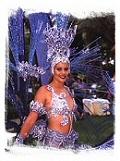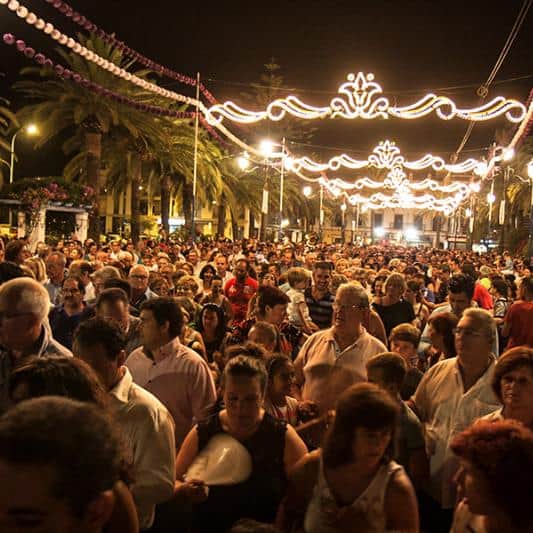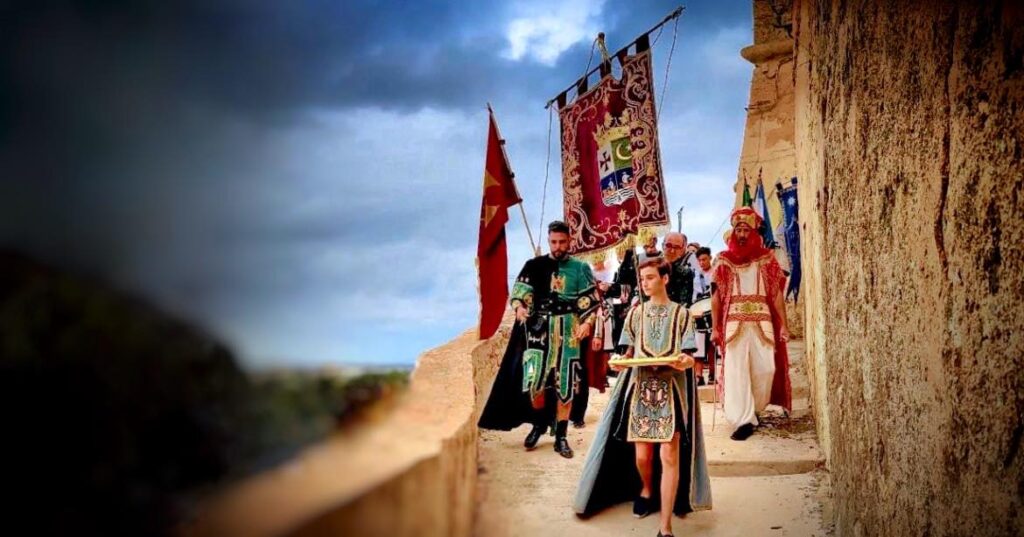- Home
- Listings
- Things To See & Do
- Car Hire
- News
- Properties
- What’s On
ES
Traditions & Festivities
Traditions & Fiestas in Granada and the Costa Tropical
In addition to traditional religious events, most villages and towns have an annual feria, a week of fun and festivities complete with street parties, parades, live entertainment, and traditional funfair amusements. Noise, dance, colour, music, fireworks and dessing up are the order of the day – or, rather, the night, as fiestas in Spain tend to carry on well into the small hours.
Spanish festivals, and the customs attached to them, tend to be a little (or more than a little) on the bizarre side. Take, for example Valencia’s “Las Fallas” (the Festival of Fire), or “La Tomatino” – the Tomato Fight Festival. Then there is Barcelona’s patron saint festival, “La Merced” (also known as “Devil’s Night”), a surreal extravaganza featuring dragons, fires, explosions and female devils. Another bizarre festival is Cascamorras, held on the first week of September each year in the towns of Baza and Guadix (Granada province), which involves people throwing paint and water at each other. And what could be more weird than the Fiesta of Near Death Experience, celebrated every 29th July in As Neves, Galicia? On this day, lucky survivors – individuals who have narrowly escaped death by injury or illness – are carried through the streets of the town in their coffins!
Talking of near-death experiences, some of Spain’s festivals are downright lethal, as in the case of the “Running of the Bulls” at Pamplona and several other locations.
Granada’s festivals are no less interesting and include many parades and processions that are ostensibly Catholic, but which clearly hark back to the bachanalian festivals of Roman times (Granada was built and colonized by the Romans), and to other pre-Christian traditions.
Below is a list of the most noteworthy festival occasions in the Granada region.
Día de Reyes

Also called the Festival of the Three Kings, this is the day when the three Biblical kings of the Orient – the “three wise men” – deliver Christmas gifts to children. On the evening of Epiphany Eve, the 5th of January, three men dressed up as the kings ride through the town in a procession, scattering sweets to the crowds of excited children. That night, children set out their shoes filled with straw for the Three Kings’ camels. The Kings, passing in the night “on their way to Bethlehem”, fill the shoes with gifts. The next day, families enjoy a feast of almond soup, turkey, and roasted chestnuts. Sweets include a special nougat candy called turron and Kings’ cake. A small prize baked in the cake brings luck to the person who finds it.
Click here to find out more about how Christmas is celebrated in Granada and the Costa Tropical.
Carnival
Carnival is celebrated before the forty days of Lent. Most towns and villages in the Granada region stage some kind of parade, followed by a dance and a contest to select the local “Carnival Queen”. There are firework displays, market stalls, street parties and othe outdoor events. Many people wear fancy dress. In larger towns and cities, the celebrations go on for a whole week.

Semana Santa or "Holy Week"
The Easter week processions bring thousands of people onto the streets of Granada, both as spectators and as participants. The processions leave each of the town’s churches and meander slowly through the streets at a snail’s pace to the accompaniment of brass band music, with their huge statues of Christ on the Cross and his mother the Virgin Mary in mourning (watch video clip). The processions are organised by the religious brotherhoods, whose members work all year long preparing the elaborate costumes and decorations, and there is considerable rivalry between these groups as to who can create the most spectacular displays. The processions take place during the week leading up to Easter Sunday. See more in our Easter in Granada and Easter in the Costa tropical pages.

Day of the Cross
On 3 May, “el Día de la Cruz”, neighborhood squares are filled with decorated crosses, and many people place decorated crosses in their front windows. Some people convert their gardens or patios in their homes to elaborate shrines and open their doors to the public. Children display shrines they’ve created on street corners in the hope that passers-by will throw them a few coins in appreciation, in much the same way that childen in Britain collect “pennies for the Guy” on November 5th. There is music and dancing in the streets, and various other festivities.
Summer Ferias
Ferias (fairgrounds) are typically celebrated in Spain around summertime. The biggest and best is the Corpus de Granada, held just outside Granada city as part of the Corpus festival (in May or early June). For 8 days the party is non-stop, and the massive fairgound – which, in addition to the usual fairground rides, comprises numerous bars, discos, refreshment marquees, stalls, shops, restaurants, live entertainment and various other events – is open all night. There are also seemingly endless rows of “casetas”, or house tents (see photo), which are like private parties for families, work groups, social clubs and so on. Some casetas are public.

Fiestas de Almuñécar: Held on between August 9 and 15th. It’s worth noting that the maritime procession on August 15th in Almuñécar has been declared a Festival of National Tourist Interest in Andalusia. In addition, musical performances featuring local young artists as well as nationally or internationally renowned talents take place in the municipal pavilion. Also various sporting competitions, both on the beach and in sports facilities, are held. Both the San Miguel Castle and the Museum-Palace of the Seven Caves offer free visits throughout the days of the Almuñécar Fair. The Fair takes places on the Rio Verde fairground, at the entrance of the city.

Fiestas de Motril: The patron saint festivities in honor of Our Lady of the Head are celebrated from August 9th to August 16th with an extensive program of activities. The “casetas” are set up in the fairground, and concerts take place in the city’s bullring. The daytime fair in the historic center of the city is noteworthy, featuring music in Plaza Cruz Verde, Plaza de España y Plaza del Ciprés. The Rocktrileno Festival, which brings together local bands, is also celebrated.
Noche de San Juan
San Juan is celebrated in Spain on the night of 23 June, with bonfires on the beach, fireworks, drums, dancing, eating, drinking, and, at the stroke of midnight, bathing in the sea. According to the legend, at midnight the waters are blessed and hold special magical powers to cure illnesses, enhance beauty, grant wealth, and promote fertility. After midnight, it’s a huge all-night party until the sun comes up! According to some scholars, the festival symbolizes the baptisms of John the Baptist; but, like most supposedly Christian traditions in Spain, it has many elements which predate Christianity.
Fiestas del Carmen
The Fiestas del Carmen in the Costa Tropical celebrate the patron saint of fishermen, the Virgin of Carmen, in mid-July. The highlight is a maritime procession with beautifully decorated boats, showcasing the region’s maritime traditions. The festivities also include music, dance, sports competitions, and local food stalls. These celebrations honor the deep connection between coastal communities and the sea, making it a cherished event for locals and visitors alike.
Fiestas de Salobreña
Celebrated on the first weekend of October, these festivities encompass a vibrant array of activities including open-air dances, flamenco performances, communal feasts, and a religious procession.
Don’t miss the pilgrimage in honor of the Virgin of the Rosary, which commences at Plaza Juan Carlos I heading towards Peñón de Salobreña Beach, drawing hundreds of participants. Numerous floats adorned with Andalusian motifs parade along, accompanied by choirs paying tribute to the Virgin of the Rosary. Citizens dressed in traditional flamenco attire join the procession. Following this, throughout the day, concerts, contests, and a mass in honor of the Virgin of the Rosary take place on the promenade.
Balandrilla de los Gatos Festivities in La Rábita

The Balandrilla de los Gatos, also known as the Moros y Cristianos festival of La Rábita, is an event that commemorates the naval battle between the Muslim and Christian factions during the Reconquest of the Kingdom of Granada. This celebration takes place around September 8, coinciding with the patron saint festivities in honor of the Virgen del Mar.
The event begins with a parade of Moors and Christians starting from the vicinity of the castle, led by the standard-bearer carrying the royal banner and the keys to the castle. During the procession, as they pass through the church gates, each group salutes and shows their respect to the patron saint, the Virgen del Mar.
Once on the beach, the groups await the arrival of the “blandras” to initiate the embassy, a theatrical speech that recreates the dispute over the keys to the castle and the lands. The naval battle, known as the Balandrilla de los Gatos, takes place on two ships, throwing vegetables until the boats are boarded and sunk. The intensity and excitement of this event, where tomatoes and peppers are hurled, make it one of the highlights of the festivities.
After the battle concludes, the factions disband, and all participants simply become known as “rabiteños,” marking the end of the war and the beginning of the celebration in honor of the patron saint.
